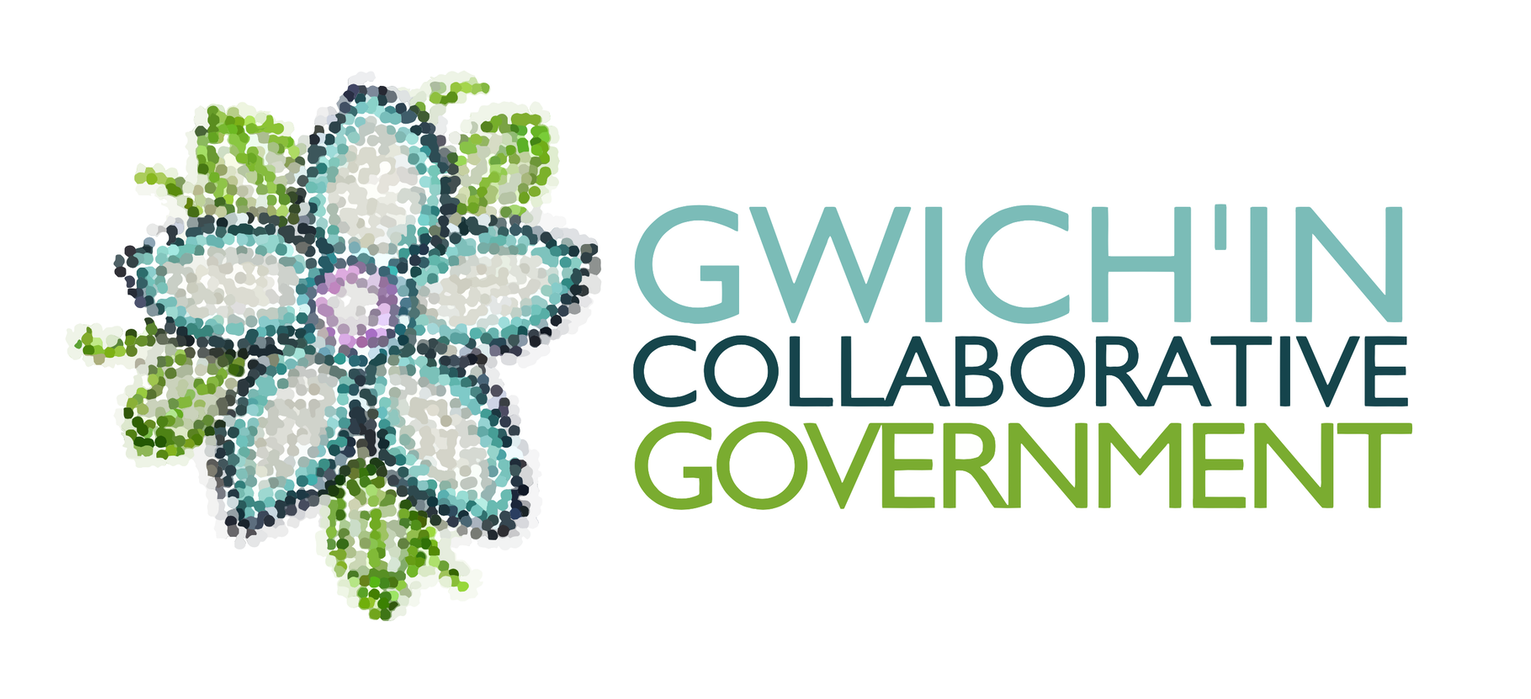Our journey to a Gwich'in Government
Since time immemorial, Gwich’in lived on the lands stretching from the interior of Alaska through the Yukon and into the Mackenzie Valley. We governed ourselves according to our own laws and traditions. After Euro-Canadian contact, we became subject to colonial laws that restricted our inherent right to self-determination.
In July 1921, the Gwich’in signed Treaty 11 in Tsiigehtchic and Tetlit Zheh. By signing the treaty, the Government of Canada recognized some of our rights but continued to assert control over our communities through colonial laws like the Indian Act.
Several decades later, on April 22, 1992, Gwich’in came together and voted overwhelmingly in favor (94%) of the Gwich’in Comprehensive Land Claim Agreement. The land claim not only recognized our rights to manage our lands and resources, it also guaranteed that Gwich’in can negotiate a Gwich'in government agreement.
In 2007, fifteen years after signing the land claim, the Gwich’in Tribal Council (GTC) signed a process and schedule agreement with Canada and the Government of the Northwest Territories, outlining the steps we need to take to reach Gwich'in governance. The government negotiating team spent several years speaking with our communities, and in 2016, the GTC Board of Directors approved a draft Agreement-in-Principle.
The Gwich’in are currently negotiating a Final Gwich'in Government Agreement, with the goal of implementation by 2027.
History of Gwich'in Government
Pre-contact
The Gwich’in have lived on the lands of what is now Alaska, the Yukon, and the Northwest Territories since time immemorial. Prior to Euro-Canadian contact, Gwich’in lived in nine groups:
- Dihaii (the far people)
- Neets’aii (Chandalar River people)
- Dendoo (Birch Creek people)
- Gwichaa (Yukon Flats people)
- Draanjik (Black River People)
- Vuntut (Crow Flats people)
- Dagudh (Upper Porcupine River people)
- Teelit (Peel River people)
- Gwichya (Arctic Red River people).
We governed ourselves according to our own laws and traditions, but after contact, we were subject to colonial laws that restricted our inherent rights.
Treaty 11 (1921)
In July 1921, Chief Julius Salu (Tetlit Zheh) and Chief Paul Niditchie (Tsiigehtchic) signed Treaty 11. Treaty 11 acknowledged some of our rights to our lands and resources, however, the Government of Canada continued to assert control over us through colonial laws like the Indian Act.
Land Claim (1992)
On April 22, 1992, Gwich’in came together and voted overwhelmingly in favor (94%) of Gwich’in Comprehensive Land Claim Agreement. The land claim guarantees that Gwich’in can negotiate self-government with the federal and territorial governments.
Early days of self-government (1993-2006)
In the early days of the self-government process, Gwich’in worked with the Inuvialuit to negotiate a self-government agreement and in 2001 Gwich’in and Inuvialuit negotiators signed the Beaufort Delta Agreement-in-Principle. However, a few years later, Gwich’in decided that this path towards self-government did not suit the needs of our communities. In 2006, Gwich’in officially stepped away from the self-government process with the Inuvialuit.
Regional self-government (2007-2012)
The following year, Gwich’in agreed to a new process and schedule to continue negotiations with the Government of Canada and the GNWT. By 2011, Gwich’in re-designed how we negotiate self-government. We created a self-government negotiation team with representatives from each DGO to listen to Gwich’in and keep our communities involved in the process.
The GTC Board of Directors approved the new negotiation structure and asked the self-government negotiation team to present a draft constitution which will eventually be the base for how we govern ourselves under self-government. In December 2012, the GTC Board approved our draft constitution.
Draft Agreement-in-Principle (2013-2016)
From 2013-2016, the self-government negotiation team worked to negotiate a draft agreement-in-principle. The team visited with communities, including communities outside the GSA where Gwich’in live, to gather feedback on what should be included in the agreement. On April 2016, the GTC Board of Directors approved the draft agreement-in-principle.
The draft agreement-in-principle was negotiated regionally. In 2017, the Nihtat Gwich’in Council decided that they wanted to re-think this regional approach to negotiations. They left the process to negotiate their own community-based self-government agreement. At the Nihtat Annual General Assembly in 2021, the NGC passed a motion to re-join with the other three communities to continue the regional approach.
Collaborative approach to self-government (2018)
In 2018, the GTC Annual General Assembly passed a resolution to pursue self-government based on a community-driven collaborative approach where the Ehdiitat, Tetlit, and Gwichya Gwich’in Councils work together with GTC to negotiate Gwich'in Collaborative Self-Government (GCSG). At the Nihtat Annual General Assembly in 2021, the NGC passed a motion to re-join with the other three communities to continue the regional approach.
Today
The Regional Gwich’in Collaborative is the regional team responsible for negotiating Gwich'in government on behalf of the four Gwich'in communities.
The resolution coming out of the 2021 AGA states that the neogitating team is:
- to continue the final agreement negotiations with Canada and the GNWT
- to ensure funding is in place to support the activities to achieve final agreement ratification
- to provide updates to the Board and Participants on the status of the rolling draft final agreement (via the comms plan and at Board meetings, AGAs)
- to be ready to explain what the self government agreement is and what the objectives include and how they are prioritized
- to be ready to explain what the planned approach to implementation will look like after ratification.
